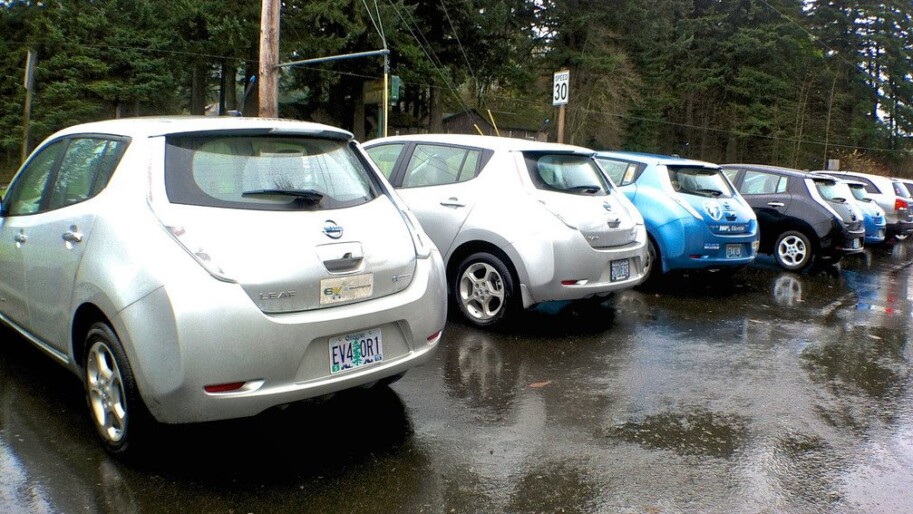by Jock Gilchrist and Buddy Burch
Of all the problems we face in the wake of COVID-19, the slowdown of China’s EV manufacturing may not seem that important. However, this slowdown comes at a particularly bad time– when scientists are realizing just how deadly fossil fuel pollution actually is in the face of the pandemic. This realization drives home just how important vehicle electrification is for solving multiple problems that we face today. Carbon emissions, air pollution and the associated inequitable public health outcomes, and lost economic productivity can all be improved as Electric Vehicles (EVs) become more mainstream – especially when combined with a renewably powered grid.
Despite the promise of EVs, some say that EVs are too expensive and just as polluting as internal combustion engine (ICE) vehicles. We dug into the latest numbers to assess these claims. The data suggests that there’s good reason to be bullish on EVs.
A common criticism of EVs is that they are costlier than ICE vehicles. A snapshot of sticker prices today confirms this. But what that snapshot leaves out is the rapidly declining price tag of EVs over the last 10 years. Battery price largely drives EV cost. In 2010, batteries averaged $1,100 per kilowatt-hour (kWh). Now, they cost $156/kWh. That’s an 87% reduction in less than a decade – a telltale sign of a disruptive, exponentially growing technology.
Cost parity – the critical moment when EV prices shrink to that of ICE vehicles – is approaching quickly. Reports suggest cost parity will be achieved when batteries cost about $100/kWh. Originally, Bloomberg projected this price point would arrive in 2026 – they later revised it to 2024. Deloitte says 2022.
Regardless of exactly when batteries dip below the $100/kWh threshold, they are becoming more affordable – fast. When you consider that EVs cost less than half as much to own and maintain than ICE vehicles, the lifetime cost analysis becomes even more compelling.
Price parity and cheaper maintenance do not translate to affordability for everyone, though. Political leaders have responded to concerns from low-income communities with cash subsidies to purchase EVs. A growing used-EV market also enhances its affordability.
Some also claim that EVs are just as dirty as fossil-fuel-powered cars. According to this argument, even though EVs do not use polluting gasoline, they charge from a grid powered largely by polluting fossil fuel. The Union of Concerned Scientists showed, however, the opposite to be true. In 70% of the country, EVs pollute less than an ICE car that gets 50 mpg (and most ICE cars on the road today are nowhere near that efficient).
In states with more clean energy on their grid-like New York, an EV achieves the equivalent of 135 mpg. As America’s grid continues to incorporate more renewable energy, those numbers will only increase.
In some cities, the combination of EVs and renewable energy can’t come fast enough. One study estimated that while the global coronavirus death toll is around 8,000, the improved air quality due to reduced economic activity has saved 77,000 lives in China alone.
EVs are more energy-intensive to produce than ICE cars, leading to higher manufacturing-associated emissions. But given the emissions advantage that comes from driving cleaner, EVs negate their production footprint within about a year of driving.
While the economics appear supportive, the transportation conversation isn’t just about numbers. It’s also about public health, climate change, and leaving a habitable planet for future generations.
A study published in Environment International estimated the annual cost to the US healthcare system attributable to fossil fuel pollution between $362 billion and $887 billion. And those enormous financial and health costs are predominantly borne by children and poor and low-income communities of color. Phasing out ICE vehicles would boost the economy and improve public health in one fell swoop.
Climate science is also unequivocal about transitioning away from fossil fuels if we are to avoid 2C of warming (at least). According to an article in Science, “by 2040, oil will be about to exit the global energy mix.” The dwindling performance of oil and gas stocks signals a collective recognition that the industry’s time is limited. This requires that we wean ourselves off oil soon – not at an ambiguous point in the future.
EVs are an imperfect technology. We still face challenges with battery recycling, mineral sourcing, and total EV cost. Legislative and technological solutions to these challenges are in the pipeline. EVs also need not be the only answer to our problems. Expanded and electrified public transit, along with a decarbonized grid, can play a role. Micromobility and tiny transit can play a role. Rising popular support behind a Green New Deal and other environmentally friendly, job-creating endeavors make high-quality public and shared transit more likely.
These solutions lead to cleaner air, less traffic, drastically reduced carbon emissions, and healthier communities. To get to a future that works better for all of us, we must relinquish status quo narratives that lock the polluted present in place. If we cooperate early, prioritize equity, and encourage the clean energy economy, the road ahead looks promising.


